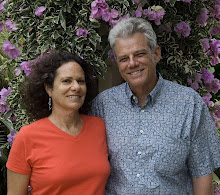


We just returned from our initial survey of Cenderawasih Bay and we know that many of you are very interested in what we found. Most of our diving, other than on Manokwari’s excellent WWII wrecks, was within Cenderawasih Bay National Park, Indonesia’s largest. This park is huge, half again larger than Raja Ampat; our 16-day survey barely scratched the “surface” of this underwater wilderness.
Cenderawasih, along with Raja Ampat and Triton Bay, makes up the Bird’s Head Seascape. Its reefs look nothing like Raja’s colorful, fish-filled reefs, nor are they similar to Triton Bay’s soft coral wonderland. Pristine and vast, the bay’s reef tops comprise some of healthiest hard coral gardens we have ever seen. Dramatic vertical walls with prolific sponge life abound on the outlying atolls. We found schooling fish along the reef points and ridges.
Cenderawasih also has a few unique features in Indonesia’s pantheon of rich reefs. The bay was geologically isolated until recently, and if you look at a map you’ll see that it is still somewhat confined. This means that less current moves through Cenderawasih’s waters, and therefore there’s less recruitment of marine larvae than in a place like Raja. This isolation has blessed Cenderawasih with a number of very colorful endemic species. Perhaps even more interesting is the fact that many normally deep-dwelling fish species are found here in relatively shallow water. This topsy-turvy reefscape, along with the presence of the world’s largest fish, the whale shark, prompted Dr. Gerald Allen to call Cenderawasih “ the Galapagos of Indonesia’s Reefs”.
Our team included Drs. Mark Erdmann and Gerald Allen who were documenting fish and collecting new species. Mark is head of the Bird’s Head Marine Programs for Conservation International (http://www.conservation.org/). Gerry is the world’s leading tropical marine ichthyologist and the author of numerous popular books on reef fish identification. Also onboard were Titus, a national park ranger with a very enlightened attitude and invaluable local knowledge; Ruland, a UNIPA (University of Papua) graduate assisted Dr. Crissy Huffard, a cephalopod expert and Conservation International staff member, with a mollusk (tridacna clam) genetic study project spearheaded by the non-diving member of our team, Pak Hamed, a UNIPA professor. Maurine and I surveyed the reefs in order to suggest itineraries for liveaboards visiting the area in the future. The detailed results of our survey will be included in the new Bird’s Head Seascape dive guide to be published late next year. Grand Komodo’s excellent crew onboard the Temukira, especially Weka, their dive master extraordinaire, contributed to the success of our trip (http://www.komodoalordive.com/).
Most of the dives Maurine and I completed were short in terms of time, but long in terms of distance covered. We surveyed the reefs on scooters in order to locate potential sweet spots; ten minutes of scootering equals about an hour’s swim for most divers. We dived a few times without scooters to look for potential critter sites, and we did find a nice variety, including, seahorses (not just pygmies!) frogfish, unusual nudibranchs, several ornate ghost pipefish, a number of interesting cephalopods, and tiger shrimp. Mark and Gerry discovered at least 5 new species of fish, including a new dottyback and garden eel. They also increased the species count of Cenderawasih from 884 species to 955. The Bird’s Head fish species count is at 1596 at the moment!
The absolute highlight of our survey was our whale shark experience. The bay’s resident whale sharks have learned that the bagans, floating fishing platforms, throw their dead fish overboard. This is a bonanza of protein enrichment for the normally plankton-eating sharks. The bagan fishermen encourage whale shark visits because the enormous fish are considered good luck. We felt like the lucky ones! The sharks seemed interested only in their free breakfast (all of the action takes place at dawn), and ignore snorkelers and divers. We spent several magical hours with these magnificent creatures and were able to photograph them in quite decent viz. Clear water, unusual fish behavior and cooperative mega-fauna…Gerry might be right. Cenderawasih may well be “the Galapagos of Indonesia’s Reefs”



